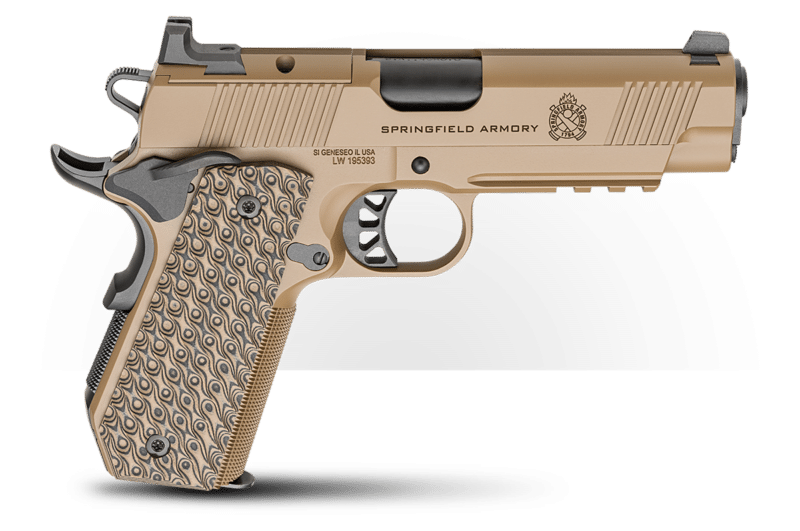North American XB-70 Valkyrie — America’s Cold War Supersonic Speed Bomber
August 29th, 2024
7 minute read
The North American Aviation XB-70 Valkyrie was a planned supersonic strategic bomber replacement for the Boeing B-52 Stratofortress and the Corvair B-58 Hustler. The United States Air Force required a bomber that would fly faster and higher than the B-52 and could also evade interceptor aircraft.
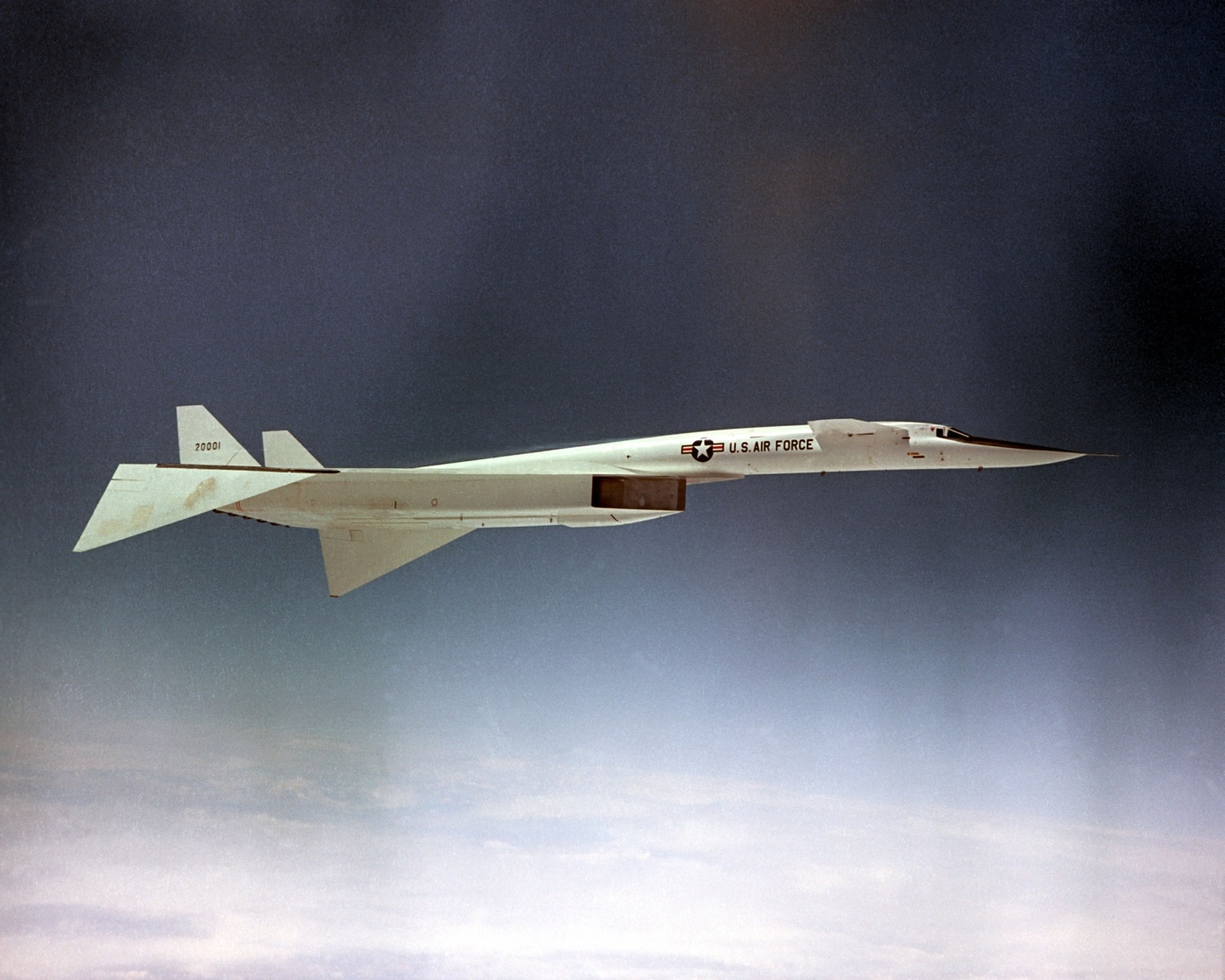
The Valkyrie was designed in the mid-1950s, when speed improved your odds of surviving a mission. However, surface-to-air missile (SAM) technology of the Soviet Union improved and forced a change to bomber tactics to favor low-level penetration. Line-of-sight radar used to detect American planes meant low-flying bombers had a better chance of reaching their targets. The high-flying Valkyrie’s speed would no longer be a decisive factor.
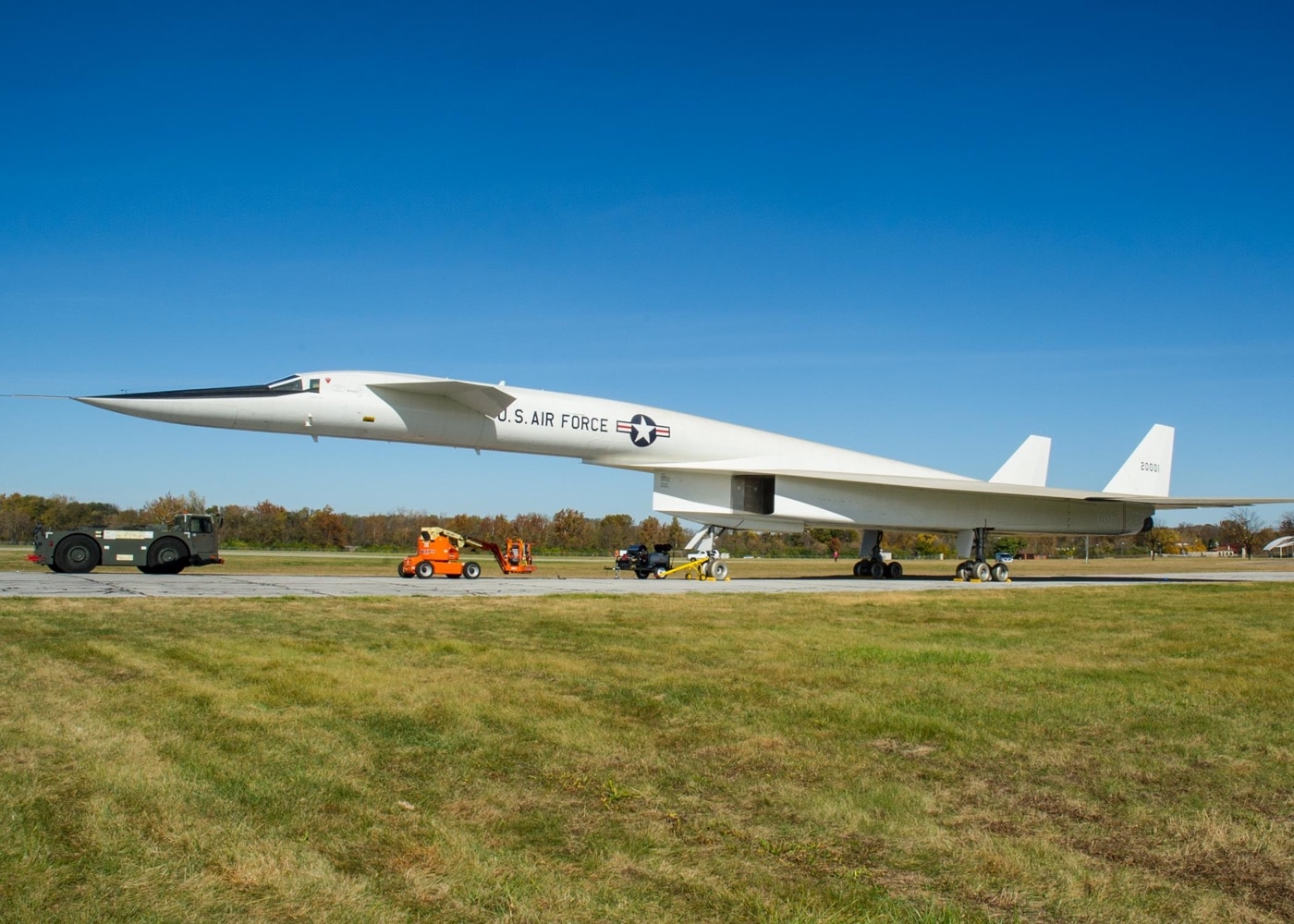
Research and development costs also doomed the program — especially when the relatively cheap Intercontinental Ballistic Missile (ICBM) made many people consider that manned strategic bombers were obsolete. Consequently, the U.S. Air Force abandoned the Valkyrie and canceled the seemingly very promising and incredibly advanced program in 1961.
The XB-70 Aircraft Concept
In September 1957, the U.S.A.F. issued operational requirements for a new supersonic bomber with:
• Cruising speed of Mach 3.0 to 3.2
• Over-target altitude of 70,000–75,000 feet
• Range of up to 10,500 miles
In December 1957, North American Aviation was selected as the prime contractor of the new XB-70 bomber. Shortly thereafter, the Air Force held a “Name the B-70” contest and received over 20,000 entries. Valkyrie was the winning submission.
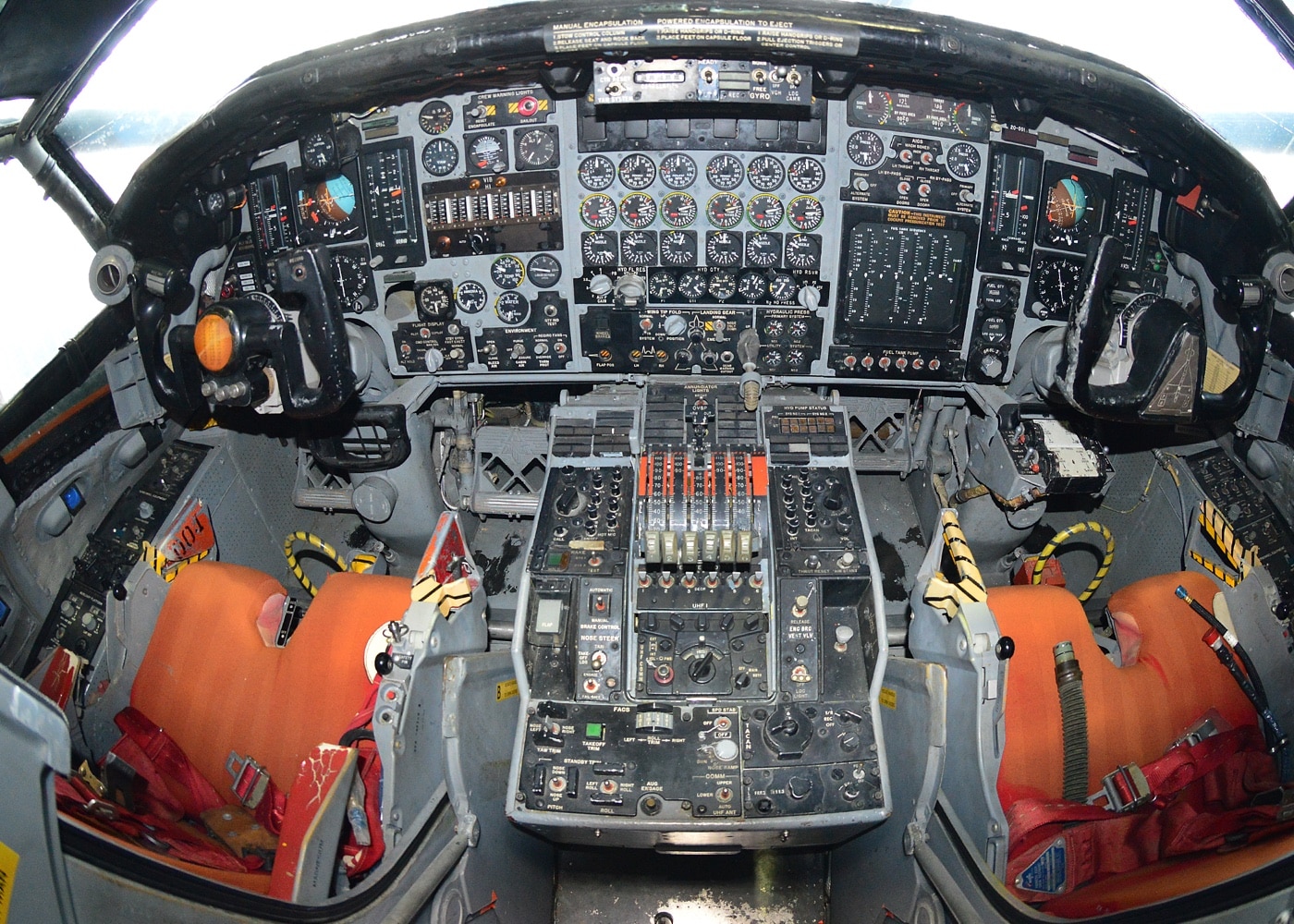
By traveling at Mach 3, at 70,000+ feet, it was believed that the B-70 would be immune to interceptor aircraft. Supersonic interceptors, like the Soviet MiG-19 and MiG-21, were the only weapons effective against the Valkyrie bombers at the beginning of its design.
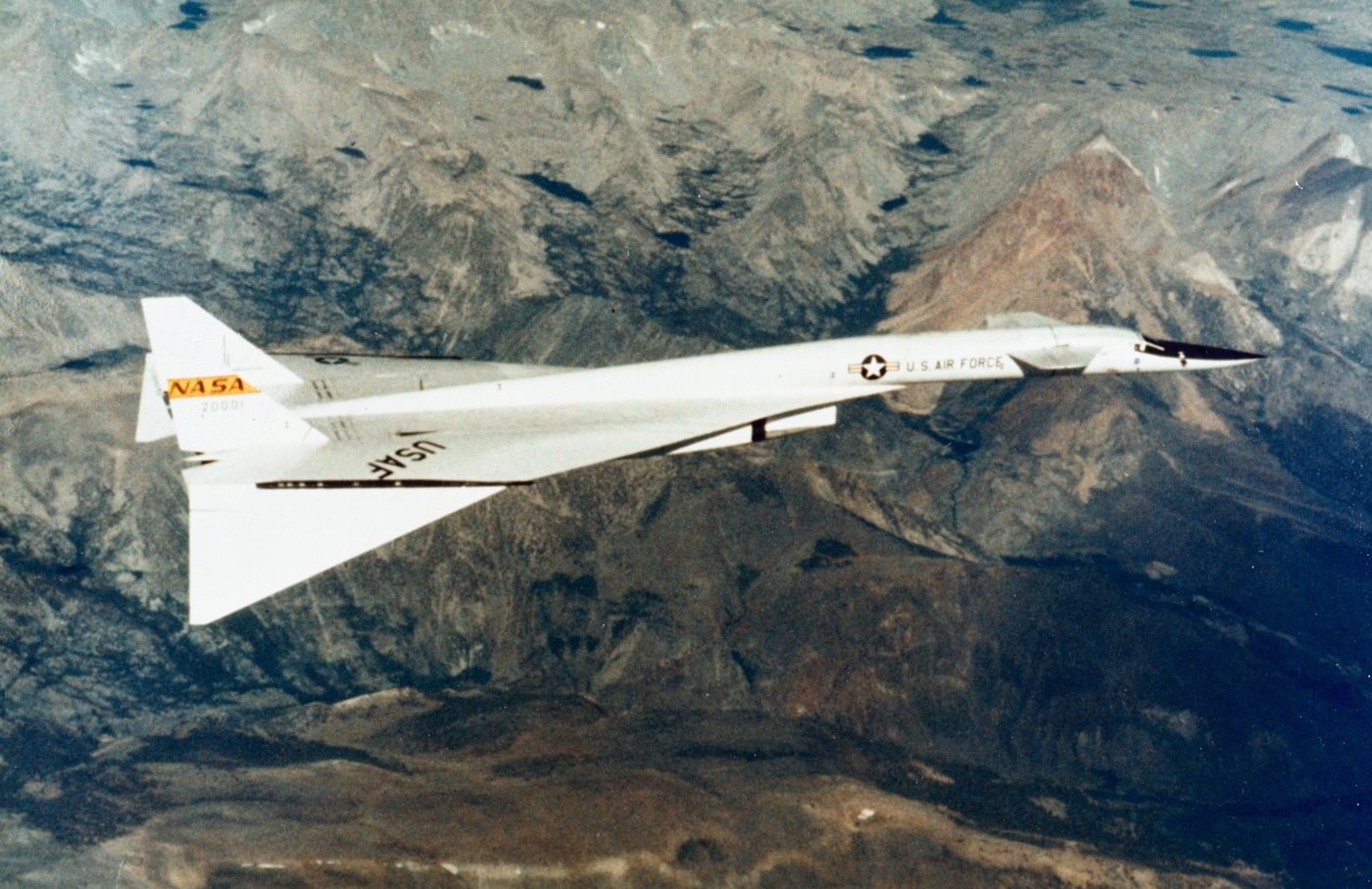
As the program continued, though, engineers in the Soviet Union made great strides in surface-to-air missile design, which put the Valkyries’ invulnerability in doubt. This was reinforced by the appearance of the Soviet SA-2 “Guideline” (also known as the S-75 Dvina) surface-to-air missile at the 1957 Moscow May Day parade.
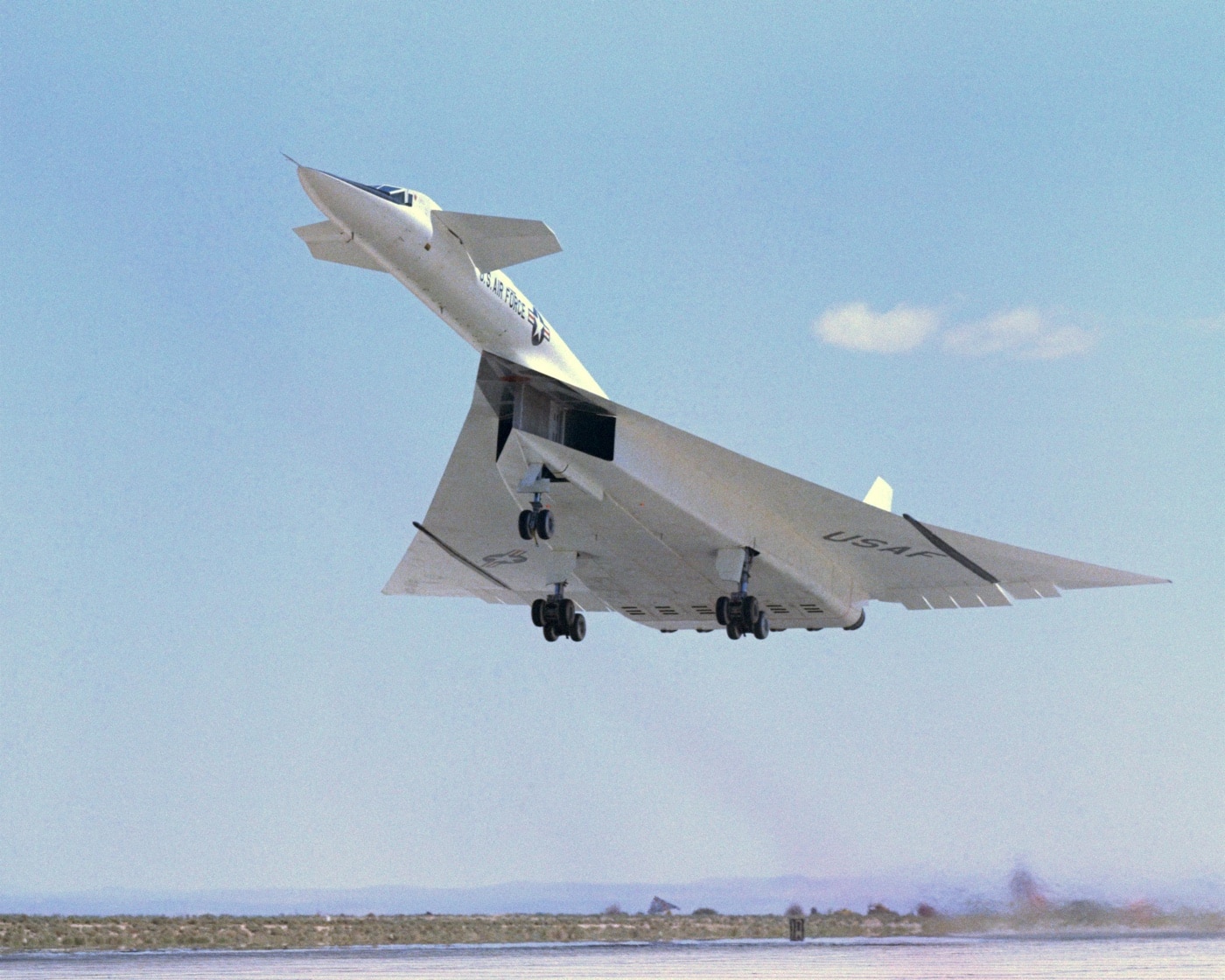
In 1957, the Convair division of General Dynamics began work on a defensive missile for the Valkyrie, code-named Pye Wacket. This lenticular design was essentially a saucer-shaped missile with a 55-pound warhead powered by three solid rocket motors that propelled it to a speed of Mach 6.5. While test flights were successful, the Valkyrie cancellation also ended this program.
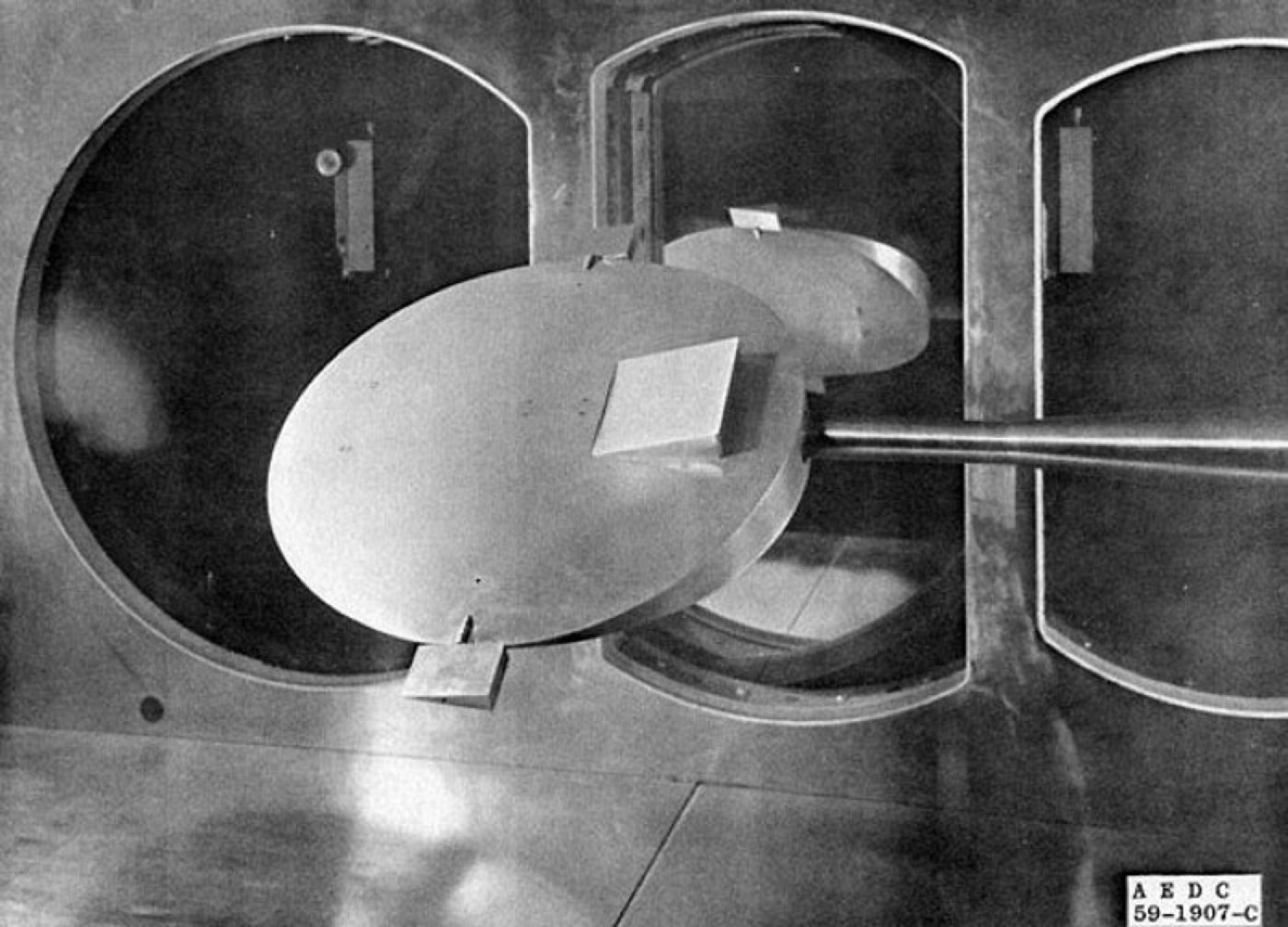
Although the bomber program was canceled, the U.S.A.F. ordered two Valkyrie prototypes as test beds to study the propulsion of supersonic flight and the aerodynamic characteristics of large aircraft.
Big and Brash Strategic Bomber
The Valkyrie was a large aircraft with a wingspan of 105 feet, a length of 192 feet 2 inches, a height of 30 feet 9 inches, a forward canard measuring 28 feet 10 inches, and a loaded weight of 534,700 lbs.
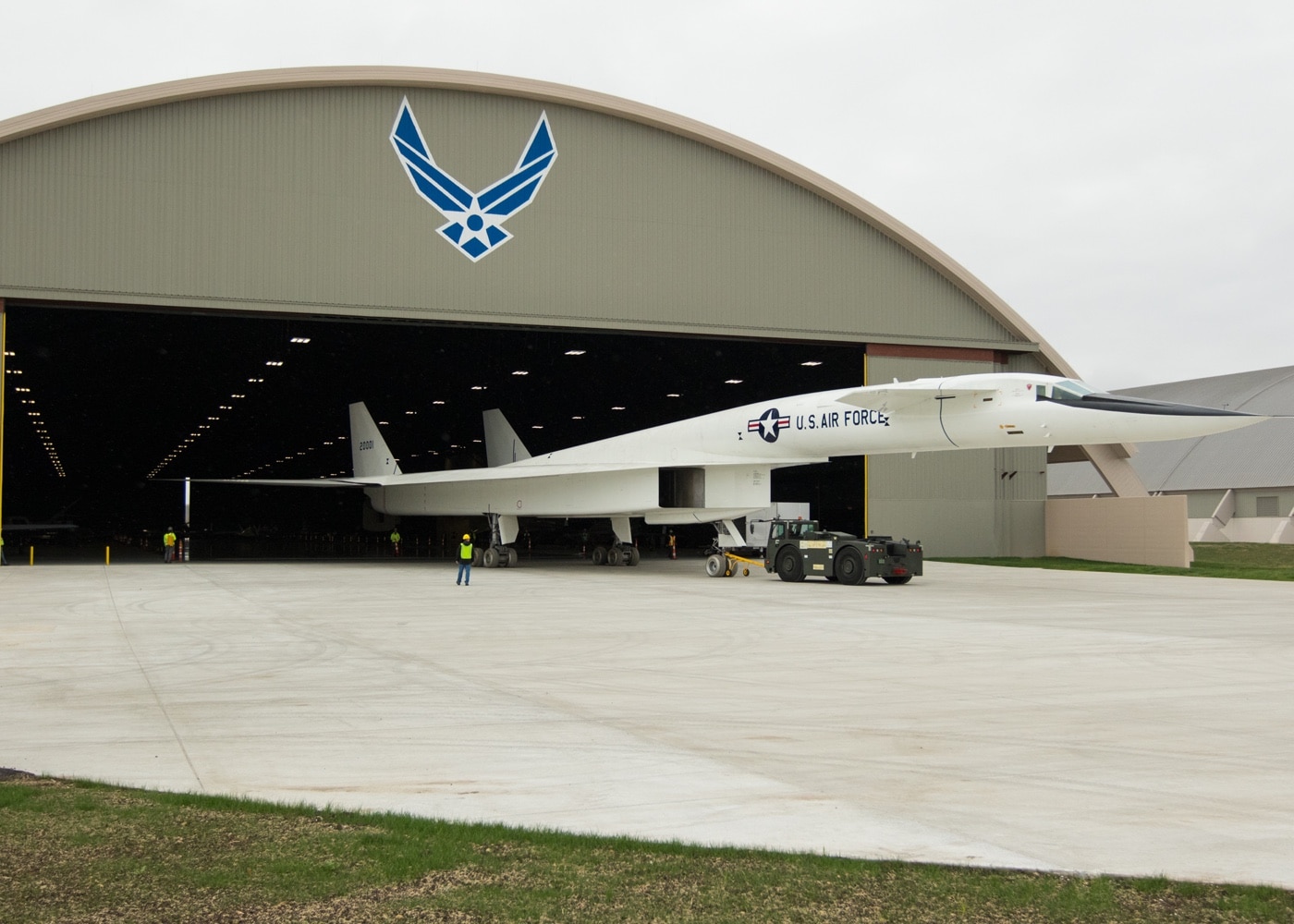
As with all cutting-edge programs, the Valkyrie used some remarkable new technology. Mach 3 travel generates heat reaching an average of 450 degrees, with the leading edges reaching over 600 degrees. These temperatures required titanium use at the nose and vertical stabilizers.
Still, the most significant tech was using stainless steel honeycomb panels, which comprised much of Valkyrie’s surface area. This technology was needed to handle the heat and use the shockwave generated by supersonic speeds for “compression lift.”
Compression Lift
While in supersonic flight, the leading edge of the splitter vane created a shockwave. North American engineers used this shockwave to help create lift for the extremely large plane.
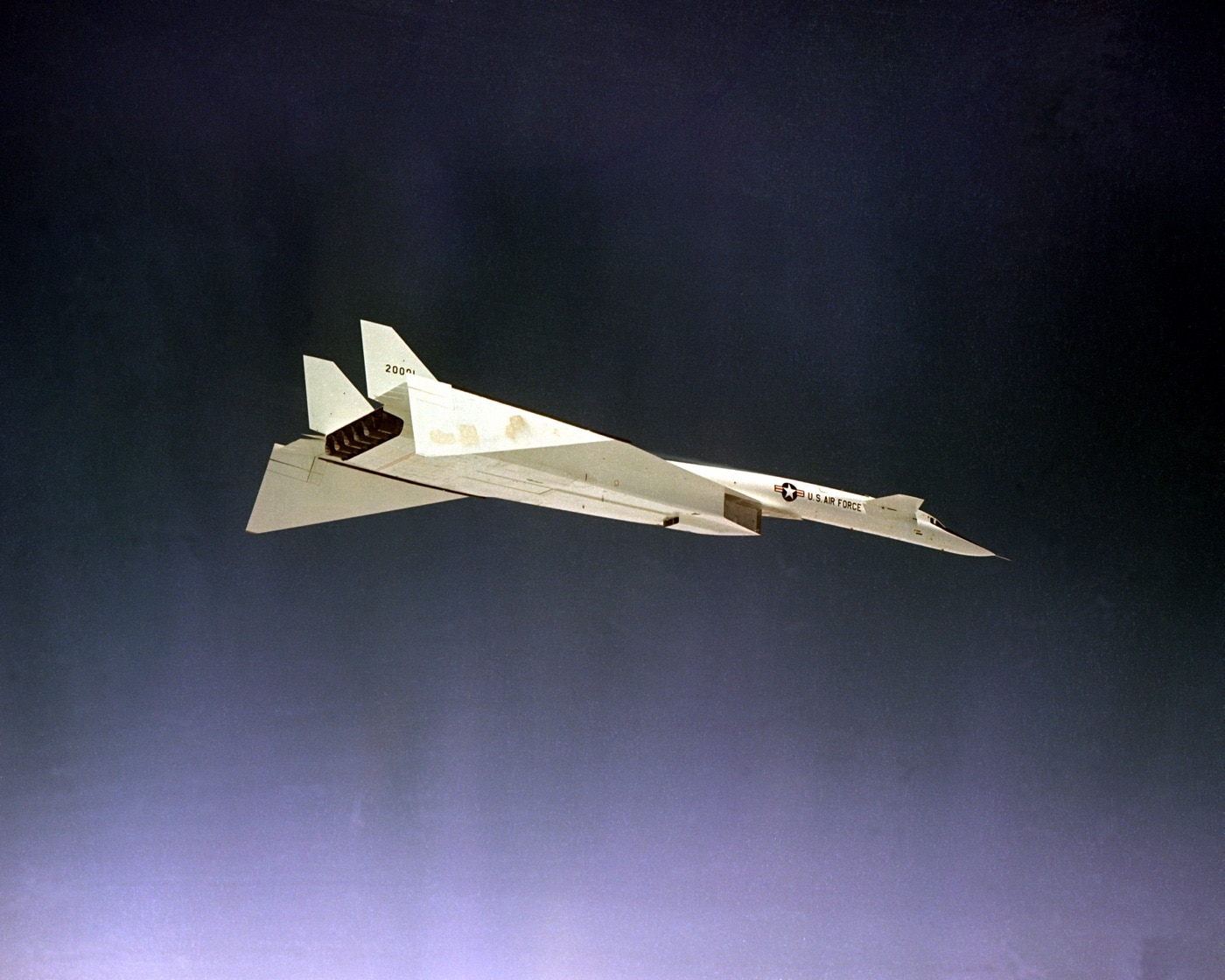
During flight, the pressure under the wings was 40 psi higher than in front of the wave. The outer portions of the wings could be adjusted downward to almost 65 degrees, which increased stability and provided about 5 percent of the Valkyrie’s lift.
North American Super-Sized “Six Pack”
For the Valkyrie to accomplish its stated mission, it required speed. The XB-70 was equipped with six General Electric YJ93-GE-3 turbojet engines, which were essentially supersized J79 engines used in the F-4 Phantom.
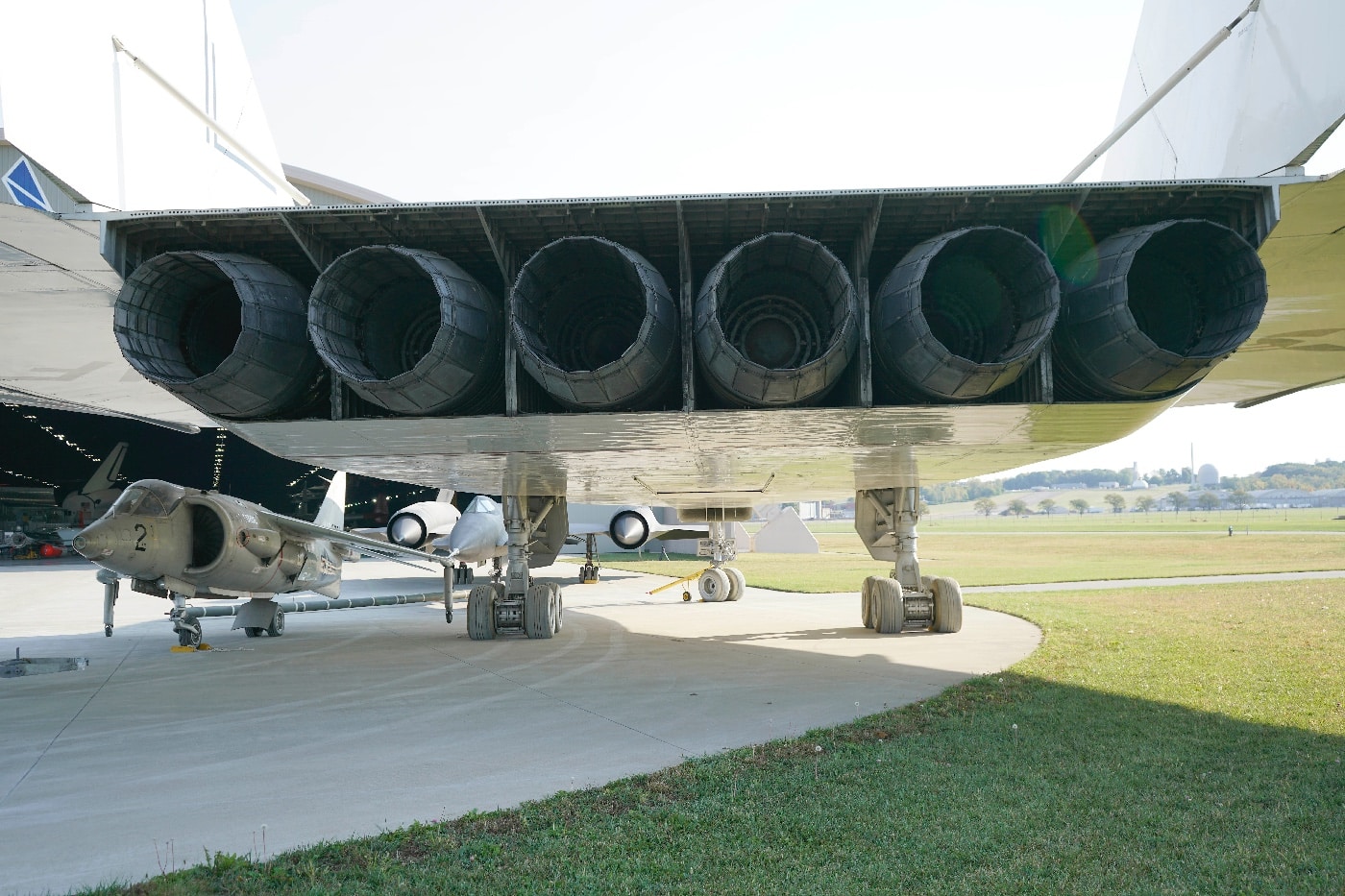
These engines produced 19,000 pounds of thrust each in regular operation and 28,000 pounds while in afterburner. With a thrust-to-weight ratio of 5:1, they gave the Valkyrie a speed of 2,056 mph (Mach 3.1) at an altitude of 73,000 feet, with a range of 4,288 miles.
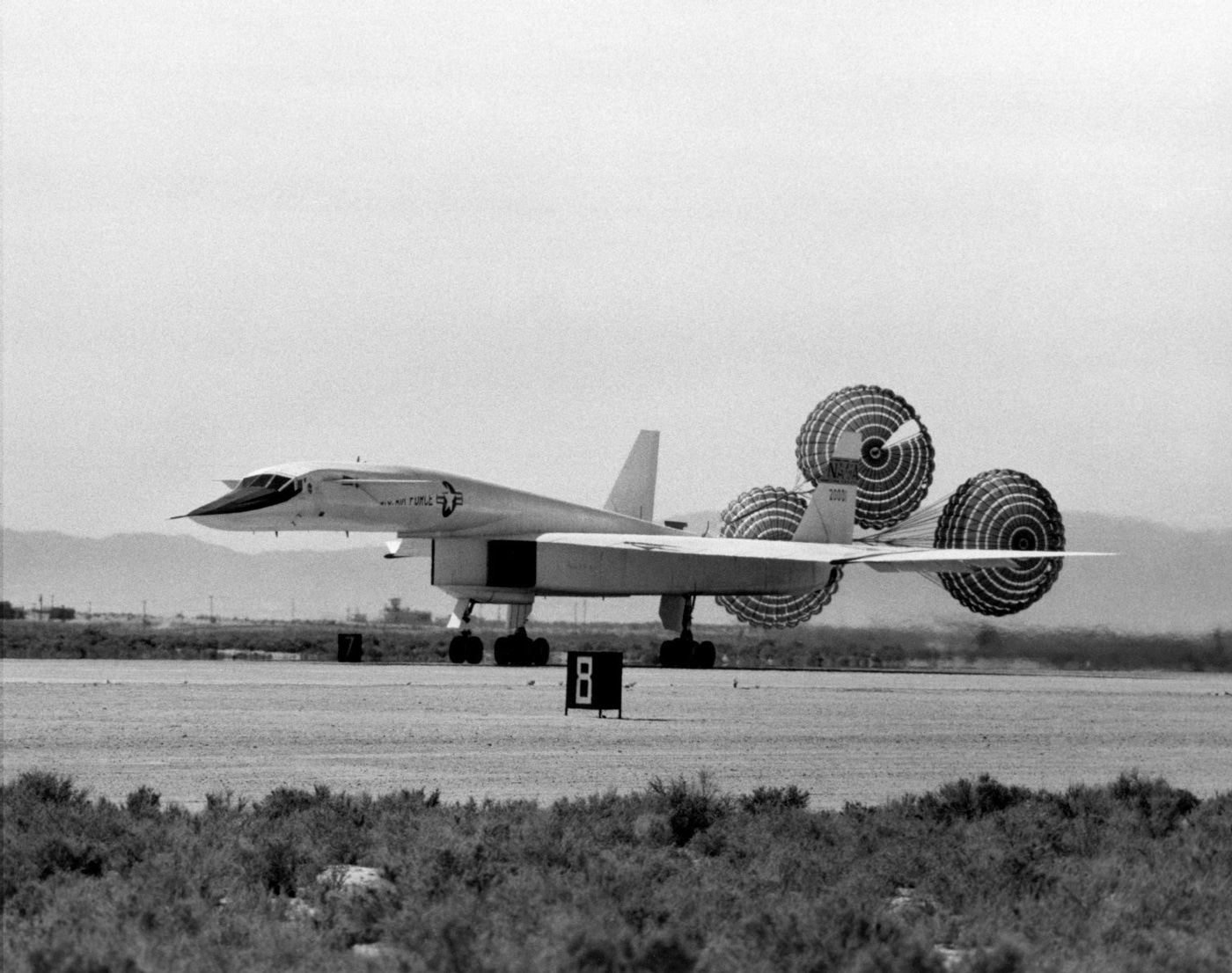
The engines required a specially formulated JP-6 jet fuel, similar to JP-5 but with a lower freezing point and improved thermal-oxidative stability. The fuel was also used for cooling and circulated through heat exchangers before entering the engines.
Disaster Strikes the Fastest Bomber
On June 8, 1966, Valkyrie number two was flying in formation with four other aircraft, including a McDonnell Douglas F-4 Phantom, a Lockheed F-104 Starfighter, a Northrop T-38 Talon and a Northrop YF5 Freedom Fighter. The formation was part of a photo shoot for General Electric, the manufacturer of the engines for all five aircraft.
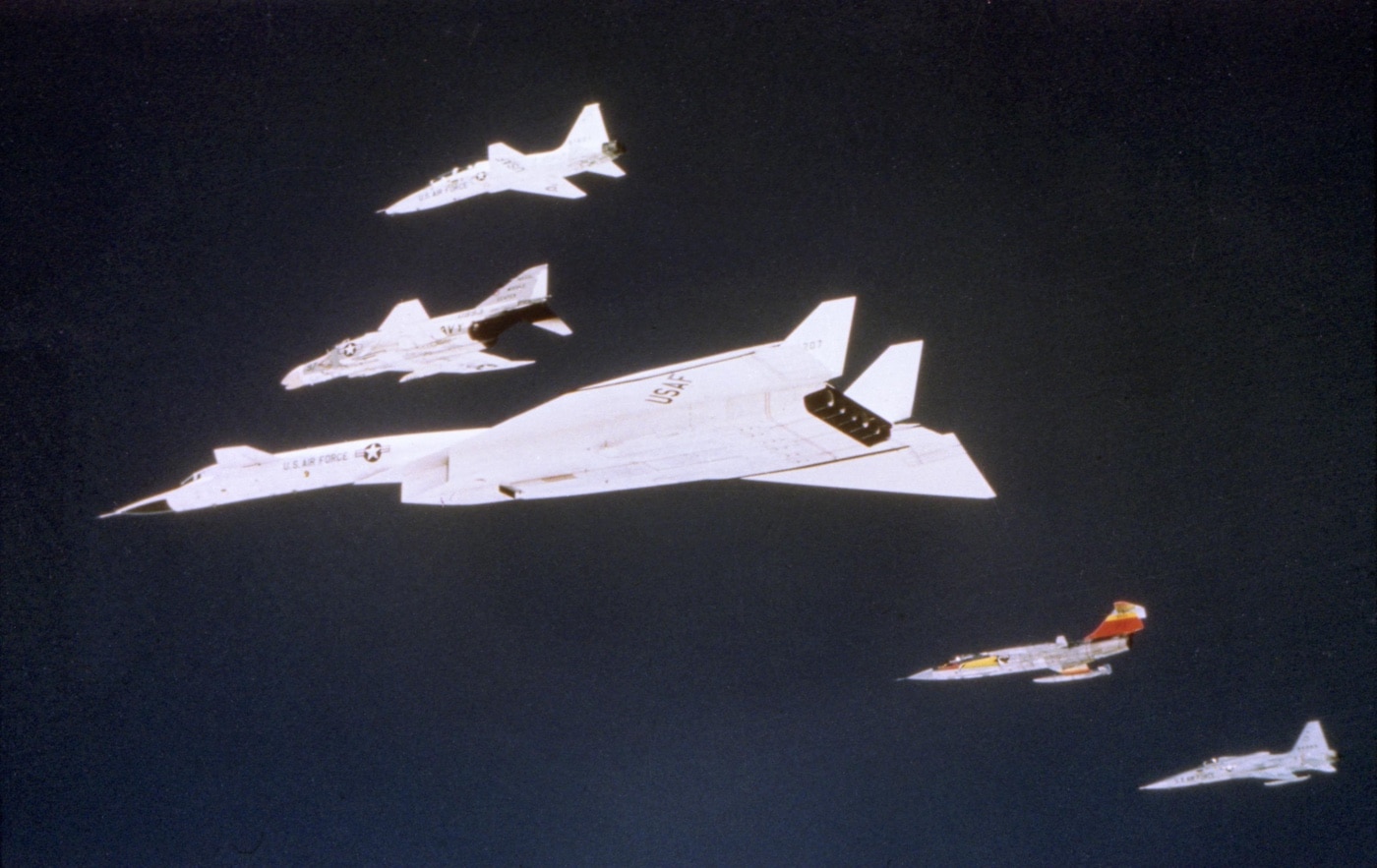
Everything was going fine, and then disaster struck: a mid-air collision. The F-104 Starfighter struck the right wingtip and rolled over the wing of Valkyrie, destroying the vertical stabilizers and damaging the left wing, crippling the Valkyrie. The Starfighter exploded, and the Valkyrie flew straight for several seconds and then became uncontrollable, rolling inverted and descending into the desert near Barstow, California.
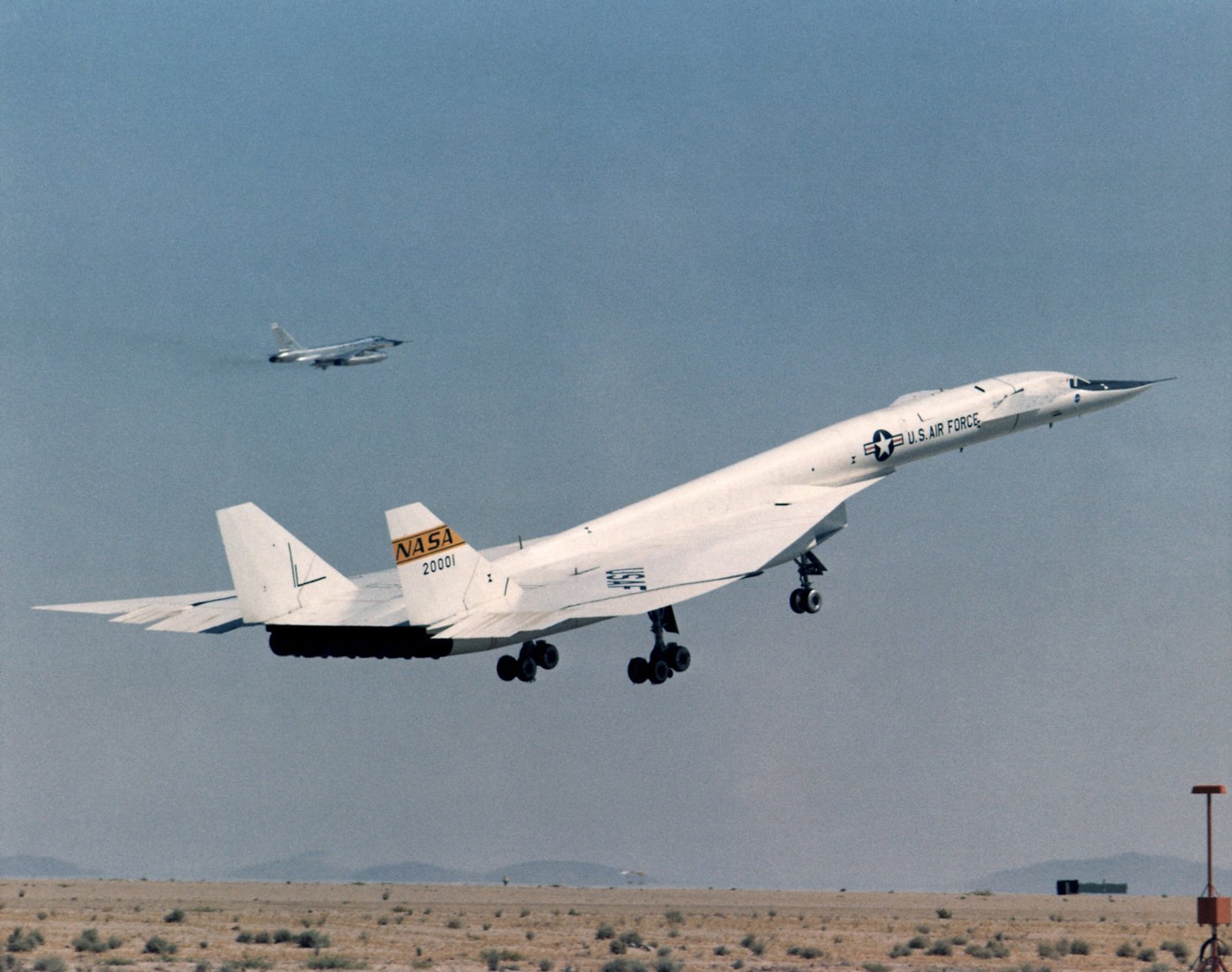
The pilot of the F-104, Joe Walker, NASA Chief Test Pilot, was killed instantly when his aircraft exploded. Valkyrie co-pilot Carl Cross was also killed, and Valkyrie pilot Al White ejected and was severely injured due to the escape pod system of the Valkyrie, including a crushed arm from the clamshell closing during the ejection sequence.
The accident investigation claimed that the F-104 pilot was too close. He could not get a proper visual of the Valkyrie wing tip without turning unnaturally over his left shoulder, and the wake from the Valkyrie caused the Starfighter to be pulled into the wing.
The Last Valkyrie
The Valkyrie program provided significant data about aerodynamics, compression lift, propulsion, and other areas. In late 1966, the Valkyrie was used to test the intensity of sonic booms for the proposed U.S. Supersonic Transport program.
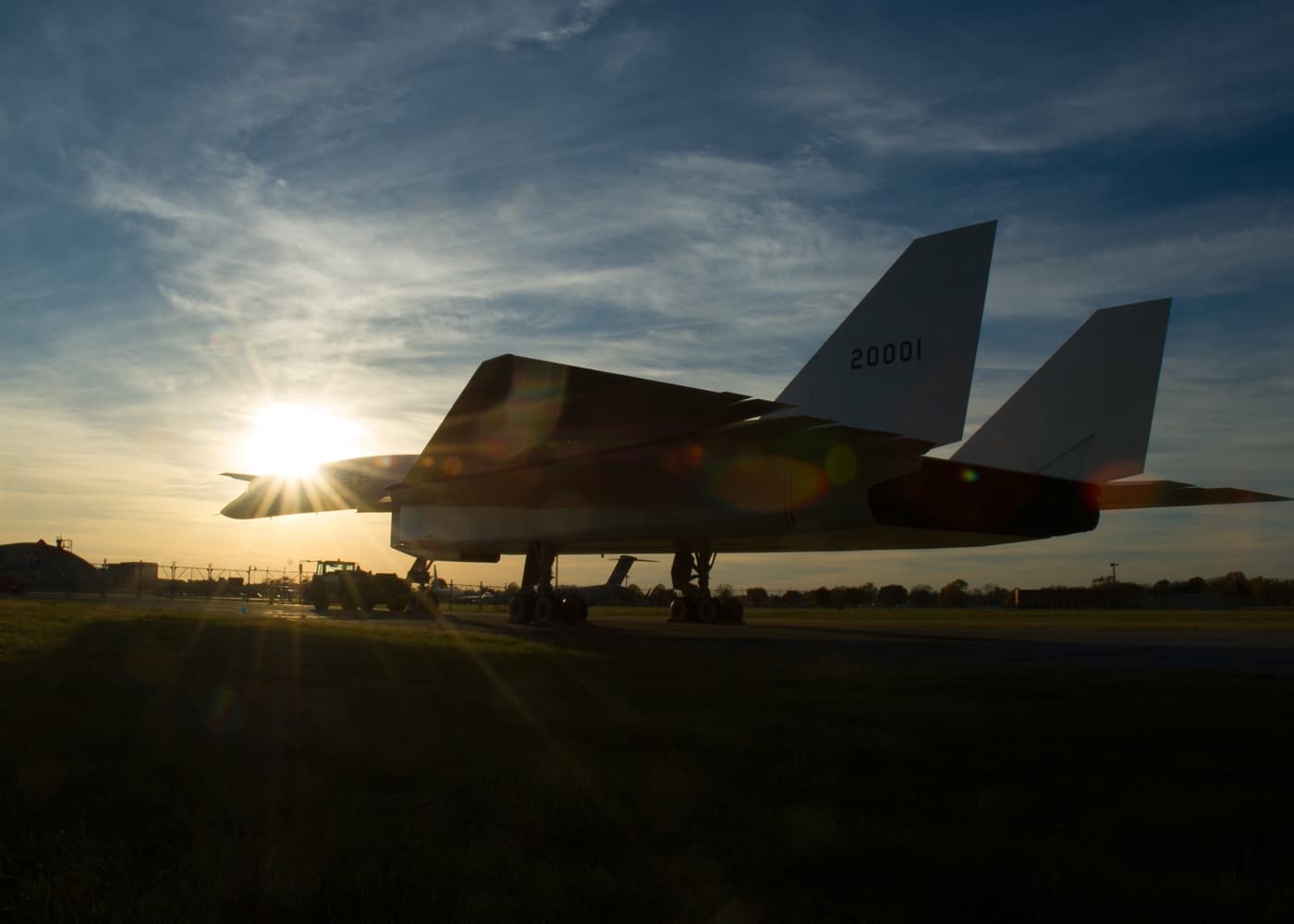
Data from the program was also used during the development of the Rockwell B-1 Lancer bomber, the U.S. Supersonic Transport (S.S.T.) and was later found in the design of the Tupolev TU-144 SST due to espionage.
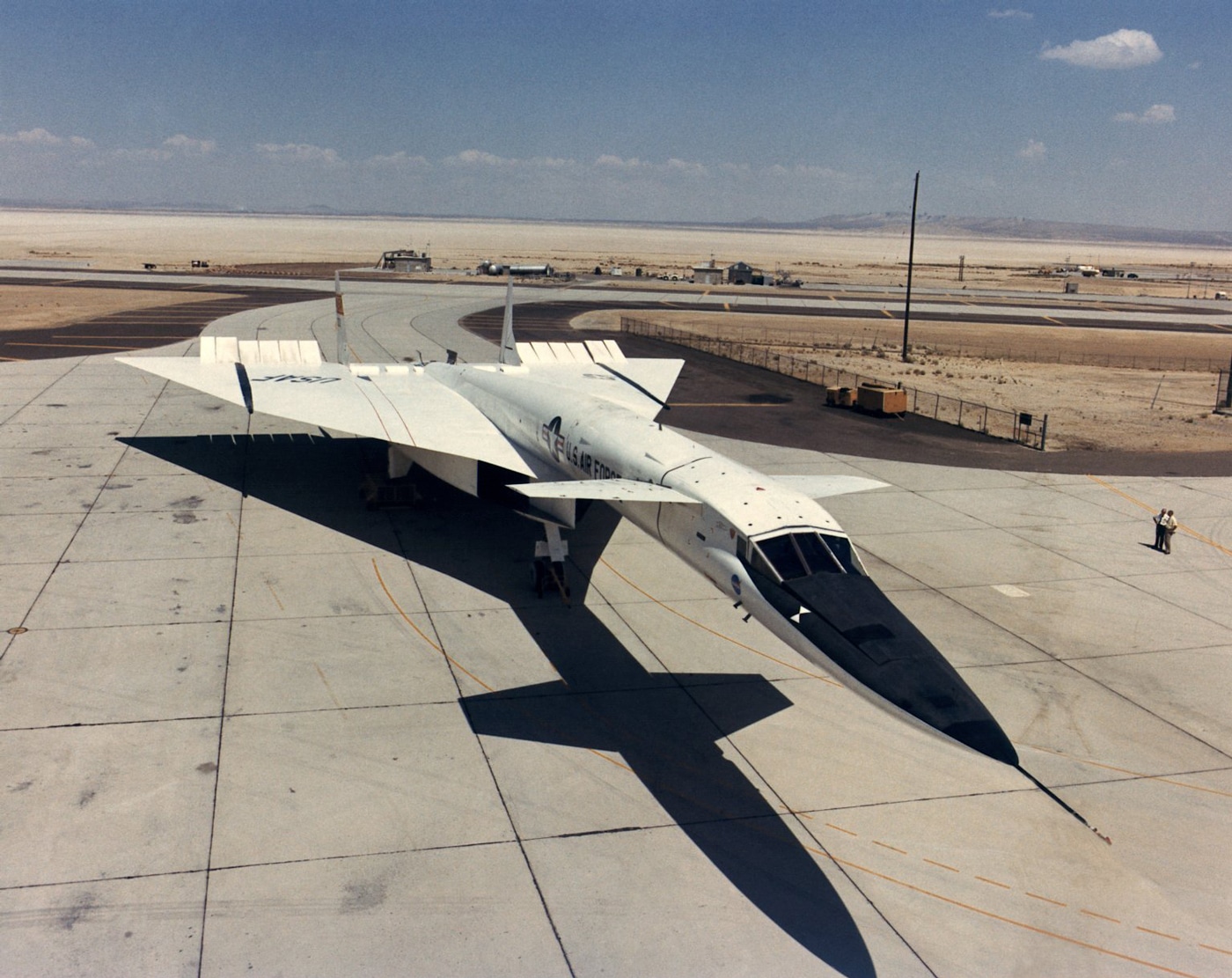
When the Valkyrie test bed flights ended in 1969, the remaining Valkyrie was flown to its final destination, the National Museum of the United States Air Force at Wright Patterson Air Force Base.
Editor’s Note: Please be sure to check out The Armory Life Forum, where you can comment about our daily articles, as well as just talk guns and gear. Click the “Go To Forum Thread” link below to jump in and discuss this article and much more!
Join the Discussion
Featured in this article
Continue Reading
Did you enjoy this article?

 485
485







